Episode 287: Putting succulents on the floral map, with nurseryman and author Robin Stockwell, The Succulent Guy
March 8th, 2017
Podcast: Play in new window | Download
Subscribe: Apple Podcasts | Google Podcasts | Podcast Index | RSS | More
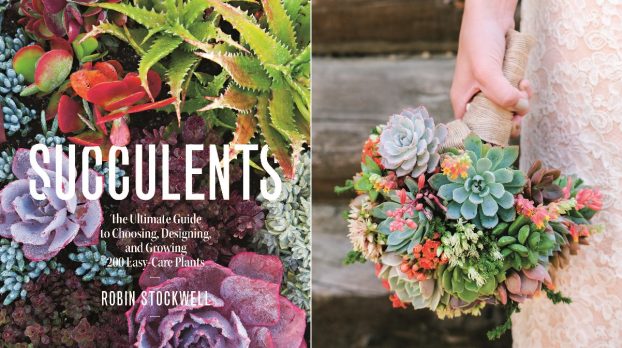
Today’s guest Robin Stockwell is the author of SUCCULENTS (left), which features the design work (right) of Slow Flowers member Marialuisa Kaprielian of Urban Succulents in San Diego.
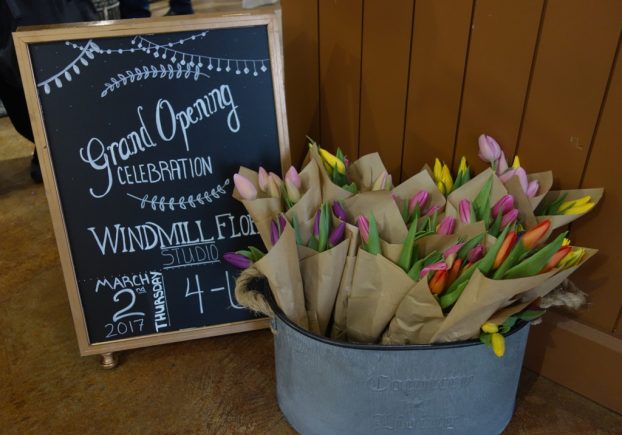
Windmill Floral Studio recently launched as the in-house, full-service florist inside a popular independent garden center — with a Slow Flowers philosophy.
Before I share my interview with succulent expert Robin Stockwell, I want to share a quick introduction of Windmill Gardens, an independent garden center based in Sumner, Washington.
Windmill founders John and Ansje DeGoede began their farm in 1968 by raising fresh cut flower crops such as iris, tulips, and daffodils. In the early 1970s, their product line was expanded to include fuchsia baskets, primroses, and more.
Today, nearly 50 years later, their son Ben DeGoede continues the growing tradition at Windmill Gardens, with seasonal assortments and baskets, as well as poinsettias.
 Windmill recently brought floral design in-house for the first time since 2001, taking over space previously occupied by a tenant, redesigning it into a beautiful, full-service shop, and making a commitment to provide only locally-grown and American-grown flowers to their everyday and wedding clients.
Windmill recently brought floral design in-house for the first time since 2001, taking over space previously occupied by a tenant, redesigning it into a beautiful, full-service shop, and making a commitment to provide only locally-grown and American-grown flowers to their everyday and wedding clients.
The grand opening took place this week and I grabbed some time with owner Ben DeGoede and general manager Wendy Pedersen to hear more.
As you recall, I cited “return of brick and mortar flower shops” as an emerging 2017 floral industry theme. The launch of Windmill Floral Studio reflects this insight, but also hints at a possible shift for traditional garden centers adding floral as a facet of their business.
Find Windmill Gardens/Floral Studio on Facebook
Follow Windmill Gardens/Floral Studio on Twitter
Follow Windmill Floral Studio on Instagram
Now let’s talk succulents. In July 2012, I co-presented a lecture and floral design workshop with Robin Stockwell, (now former) owner of Succulent Gardens Nursery in Castroville, California (Monterey Bay).
We were part of “All in Good Time,” a Garden Conservancy program hosted by the Ruth Bancroft Garden at Heather Farm in Walnut Creek, California.
I didn’t know Robin well, but I did know his amazing reputation for growing and popularizing succulents. My takeaway from time spent with Robin is that when you think about a succulent plant as a floral design ingredient, it’s important to use both its “leaves” and its “flowers.” Robin and I focused our presentation on using wonderful, versatile, irresistible succulents from our gardens and pots in floral design.
By way of background, in 2010, while working on The 50 Mile Bouquet, I was introduced to the succulents-as-cut-ingredients technique. Several of the designers we featured in that book use echeverias, aeoniums, kalanchoes and other succulent cuttings as deftly as they use dahlias and roses.
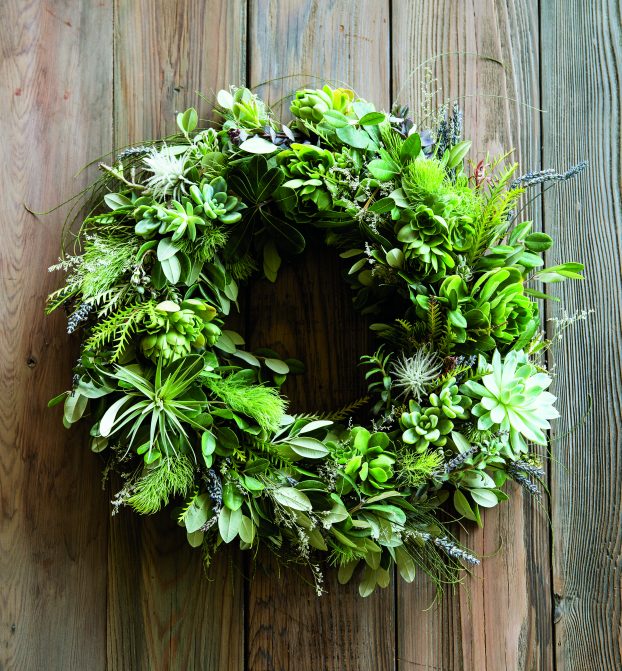
“Lush and Leafy,” a succulent wreath designed by Slow Flowers member Baylor Chapman of Lila B. Design — for Robin’s book SUCCULENTS
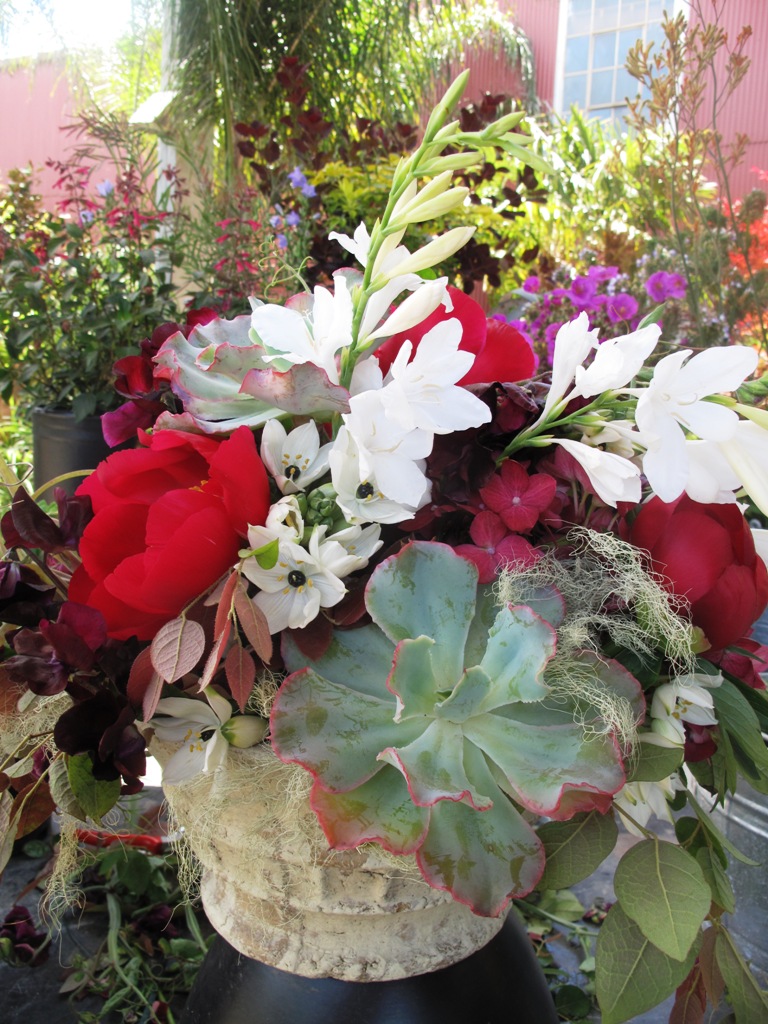
Susie Nadler created a scrumptious local bouquet using ingredients from her own backyard, from local flower growers and – of course – from succulents at Flora Grubb Gardens.
Susie Nadler and Flora Grubb, of The Cutting Garden at Flora Grubb Nursery, and Baylor Chapman of Lila B. Flowers, are rock stars when it comes to pairing succulents from the garden with flowers from the farm. Together these women inspired Sunset’s former senior garden editor Julie Chai to use her succulent cuttings for the bridal party bouquets and centerpieces at her July 2011 wedding, also featured in our the pages of The 50 Mile Bouquet.
Robin, though, was way ahead of all of us! A true pioneer, he was making bouquets of succulent flowers back in the 1980s. He sent me a black-and-white photo from a 1981 Sunset magazine article in which his then-young son was pictured with a vase of tall echeveria blooms. Let’s just call Robin an early-early-adopter of the succulent craze. He was so far ahead of his time that it has taken the rest of us 30-plus years to catch up!
“Succulents are the conservationists of the plant world” — Robin Stockwell
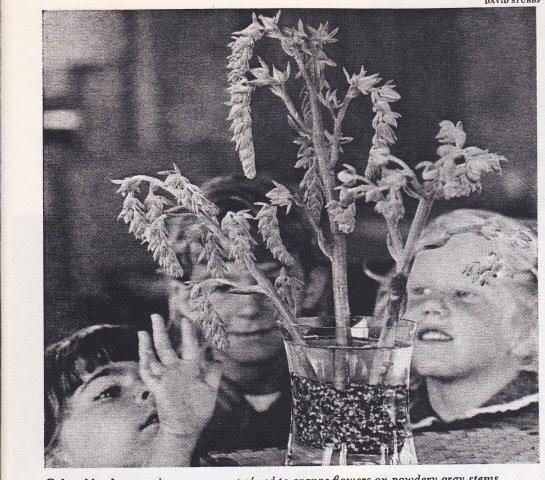
A photograph from a 1981 Sunset magazine article about Robin Stockwell’s use of succulents in floral design.
At the Garden Conservancy workshop, Robin wowed the audience with insights about how to harvest and work with a variety of succulents. He explained that the rosette-looking succulents are actually leaves; many of the plants do produce long, slender stems bearing tiny flowers that dangle from them — also quite enticing.

The San Francisco Chronicle featured Robin’s amazing succulent globe when he created it for the SF Flower & Garden Show a few years ago. A-MAZ-ING!!! Click here to read more about this project and watch a video of its construction!
I came prepared to carefully wire the rosettes and wrap their “faux stems” with green florist tape, but Robin demonstrated how you can cut the stem long enough to practically eliminate the wire. Play around with it and you’ll see what I mean. If the stem of the echeveria is 3-4 inches long, that might be enough to anchor it into a flower arrangement; it certainly doesn’t need water to look dazzling (in fact, it will last far longer than any of the perennials or annuals in that vase).
We had a great day, all around. What struck me later was a gracious note Robin sent by email:
I’ve not thought a lot about the floral side of what I do over the past few years and even when I have, it was in bits and pieces. the presentation with you brought back a much more comprehensive memory of my past experiences and gave me quite a few new insights as well.
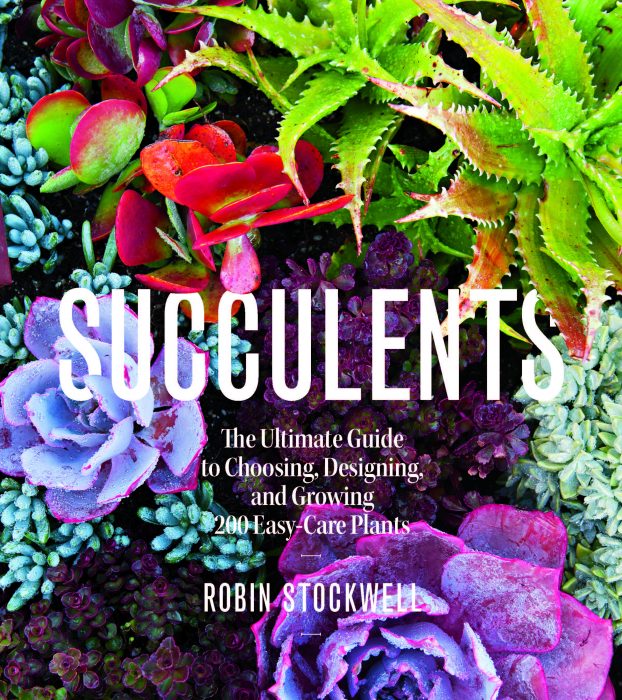 Reuniting with Robin was such a delight because it allowed us to have an extended conversation about his favorite topic AND the topic of his beautiful, brand new book called SUCCULENTS: THE ULTIMATE GUIDE TO CHOOSING, DESIGNING AND GROWING 200 EASY CARE PLANTS.
Reuniting with Robin was such a delight because it allowed us to have an extended conversation about his favorite topic AND the topic of his beautiful, brand new book called SUCCULENTS: THE ULTIMATE GUIDE TO CHOOSING, DESIGNING AND GROWING 200 EASY CARE PLANTS.
Published by Oxmoor House, a Time Inc Book imprint, Succulents was shepherded by Kathy Brenzel, who edited and closely collaborated with Robin.
As the former longtime garden editor for Sunset Magazine, Kathy is the ideal partner for Robin. She wrote a wonderful intro to the book titled “Sunset, the Surfer and Succulents,” looking back to the magazine’s long relationship with Robin Stockwell and his early influence on the gardening world’s love affair with succulents. Robin’s new website The Succulent Guy, tells us that
Robin Stockwell has been growing succulents professionally since 1972 and through the years developed an expertise in their functional use. When the waves were good he took advantage of their waterwise, low maintenance qualities, knowing they would not miss him as he dropped everything to surf. He has dedicated his life to encouraging the use of these plants and worked with plant professionals and the general public to better understand them. As a grower he created small “living pictures” in the early 1970’s and later huge vertical gardens. He is famous for his succulent Globe, using upwards of 20,000 to 30,000 plants. As an innovator, writer, and speaker, he has inspired audiences in the joy of gardening with succulent plants.
Find Robin Stockwell, The Succulent Guy, on Facebook
Follow Robin Stockwell, The Succulent Guy, on Instagram
To enter our drawing for a giveaway of Robin’s new book — SUCCULENTS — you are invited to post a photo of one of your succulent arrangements at the Slow Flowers Community page on Facebook. We’ll draw the winner on March 15th.
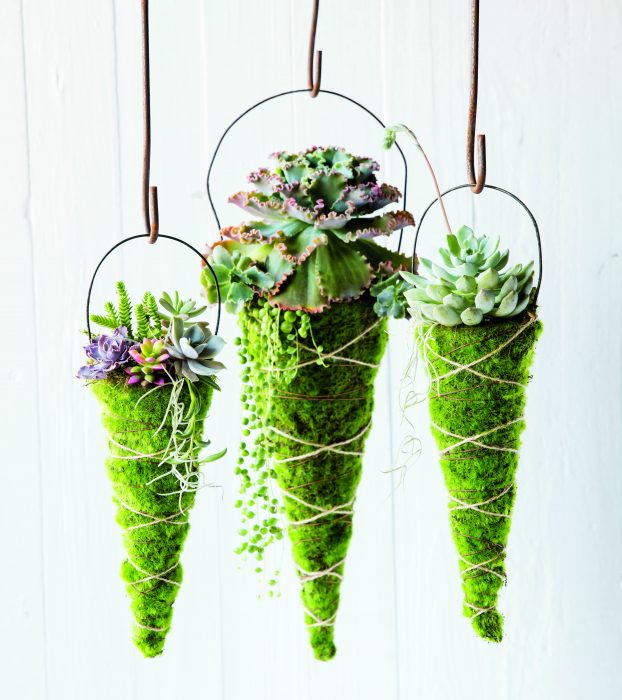
A Hanging Cone project from SUCCULENTS, designed by Jodi Shaw of Flourish. The design incorporates moss cones.
Robin Stockwell’s Succulent Tips for Floral Designers
- Cut the “heads” off of plants using a clean, sharp florist’s knife or clippers. Robin sterilizes his tools in Lysol.
- While succulents do not need much water, the aeoniums benefit from being in a little water when cut. Other succulent rosettes will be okay on a wire stem out of water. Obviously, after seven days or so in a vase, the succulent will be the last attractive element left. You’ll be able to re-use it in the next arrangement or let it produce some roots and replant it in a pot or the garden.
- Soil mix. When replanting your succulent, use a soil mix formulated for cactus and succulent plants. Succulents appreciate soil that is well aerated and drains well. Coarse bark or crushed lava work well for this, sand does not.
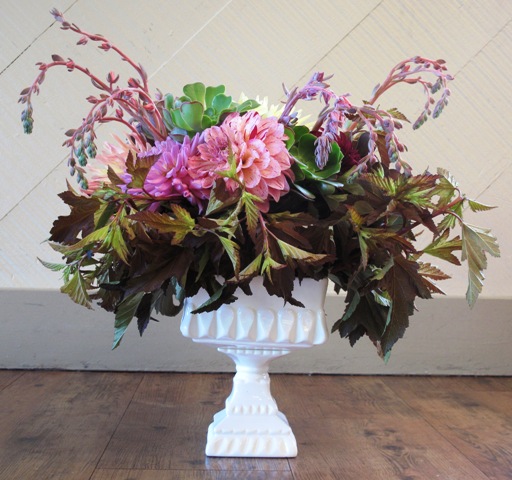
Here’s some fun bonus content featuring my how-to for the floral arrangements I created using Robin’s succulent plants when we taught together nearly five years ago.
My go-to vase for stunning arrangements is a 7-inch tall white ceramic pedestal dish. It’s square and probably originally intended for serving some kind of yummy dessert. It’s also the type of vessel that a conventional florist would fill with Oasis by shoving a cube of the toxic green foam into the base and then poking in stems to create a “full” arrangement. But instead, I used a mound of chicken wire, anchored with a reusable floral clay. Here are the steps:
- Level one of the arrangement is to fill the entire surface of chicken wire with foliage, allowing it to drape over the edge of the vase and also create a soft dome of texture. I had brought some foliage along with me on the plane from Seattle to Oakland ~Jello Mold Farm’s Physocarpus, called ‘Coppertina’ – which has a tawny hue that plays off the brighter dahlias and succulents.
- Level two: Add dahlias in a grid of one at the center and five surrounding flowers. I cut the dahlia stems relatively short so that the flowers nestled low into the foliage. Thank you to Kevin Larkin of Corralitos Dahlias for supplying the gorgeous blooms!
- Next, add 4-5 medium-sized aeoniums or echeverias between the dahlia blooms. The ones Robin gave me had 6-inch stems, but I still inserted a short piece of 12-gauge wire into the base of each to “extend” it for anchoring into the chicken wire. Susie Nadler cuts her succulent stems pretty short – about 1/2-inch – and then inserts wire and wraps the entire “stem” with floral tape, but I skipped this step here.
- Final step: We needed some height! Imagine my reaction when Robin showed up with dozens of cut flowering stems from his hybrid echeverias. Dusky pink, dark coral, pale turquoise. . . the palette was dreamy! Robin’s hybrid echeverias produce mega-rosettes measuring up to 12-inches across, so no surprise that their flowers are also overly robust. The ones he brought me were 10-12 inches long. I inserted several into the bouquet, through the top and down between the other ingredients to be supported by the hidden chicken wire. The hover above the rest of the flowers to finish off the design with a wow-factor!
 Thanks so much for listening today. The Slow Flowers Podcast has been downloaded more than 165,000 times by listeners like you. We ended the month of February with 9,647 downloads — an all-time high, which is pretty cool for the shortest month of the year! THANK YOU to each one of you for downloading, listening, commenting and sharing. It means so much.
Thanks so much for listening today. The Slow Flowers Podcast has been downloaded more than 165,000 times by listeners like you. We ended the month of February with 9,647 downloads — an all-time high, which is pretty cool for the shortest month of the year! THANK YOU to each one of you for downloading, listening, commenting and sharing. It means so much.
If you value the content you receive each week, I invite you to show your thanks and support the Slow Flowers Podcast with a donation — the button can be found on our home page in the right column. Your contributions will help make it possible to transcribe future episodes of the Podcast.
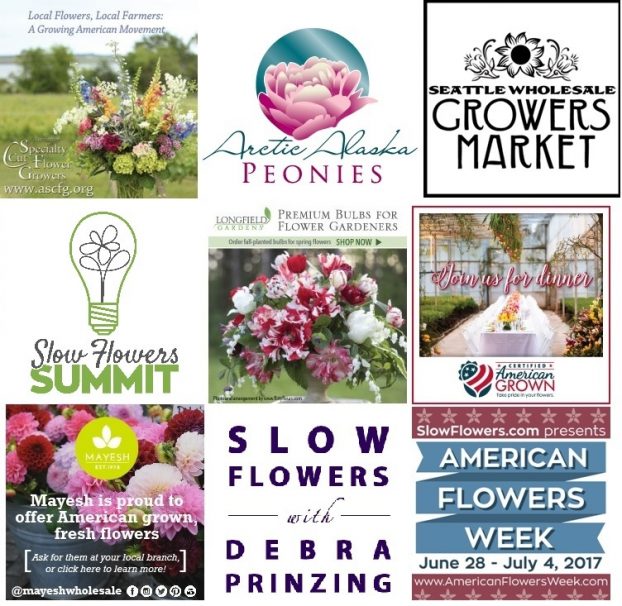 Thank you to our lead sponsor for 2017: Certified American Grown Flowers. The Certified American-Grown program and label provide a guarantee for designers and consumers on the source of their flowers. Take pride in your flowers and buy with confidence, ask for Certified American Grown Flowers. To learn more visit americangrownflowers.org.
Thank you to our lead sponsor for 2017: Certified American Grown Flowers. The Certified American-Grown program and label provide a guarantee for designers and consumers on the source of their flowers. Take pride in your flowers and buy with confidence, ask for Certified American Grown Flowers. To learn more visit americangrownflowers.org.
We’re also grateful for support from Arctic Alaska Peonies, a cooperative of 50 family farms in the heart of Alaska providing high quality, American Grown peony flowers during the months of July and August. Visit them today at arcticalaskapeonies.com
And welcome to our newest sponsor, the Seattle Wholesale Growers Market, a farmer-owned cooperative committed to providing the very best the Pacific Northwest has to offer in cut flowers, foliage and plants. The Growers Market’s mission is to foster a vibrant marketplace that sustains local flower farms and provides top-quality products and service to the local floral industry. Find them at seattlewholesalegrowersmarket.com
Longfield Gardens has returned as a 2017 sponsor, and we couldn’t be happier to share their resources with you. Longfield Gardens provides home gardeners with high quality flower bulbs and perennials. Their online store offers plants for every region and every season, from tulips and daffodils to dahlias, caladiums and amaryllis. Visit them at lfgardens.com.
And finally, thank you Association of Specialty Cut Flower Growers. Formed in 1988, ASCFG was created to educate, unite, and support commercial cut flower growers. It mission is to help growers produce high-quality floral material, and to foster and promote the local availability of that product. Learn more at ascfg.org
I’m Debra Prinzing, host and producer of the Slow Flowers Podcast. Next week, you’re invited to join me in putting more American grown flowers on the table, one vase at a time. And If you like what you hear, please consider logging onto Itunes and posting a listener review.
The content and opinions expressed here are either mine alone or those of my guests alone, independent of any podcast sponsor or other person, company or organization.
The Slow Flowers Podcast is engineered and edited by Andrew Brenlan. Learn more about his work at KineticTreeFitness.com.









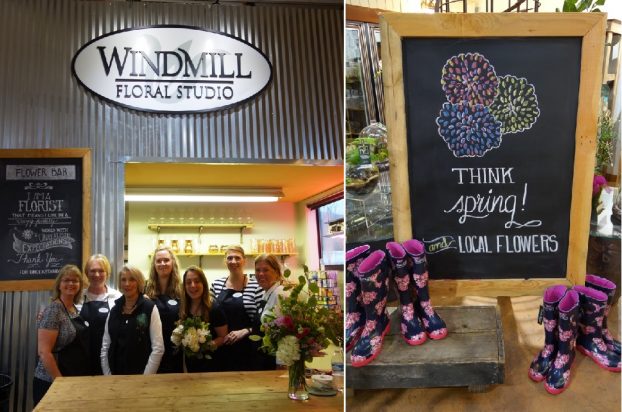
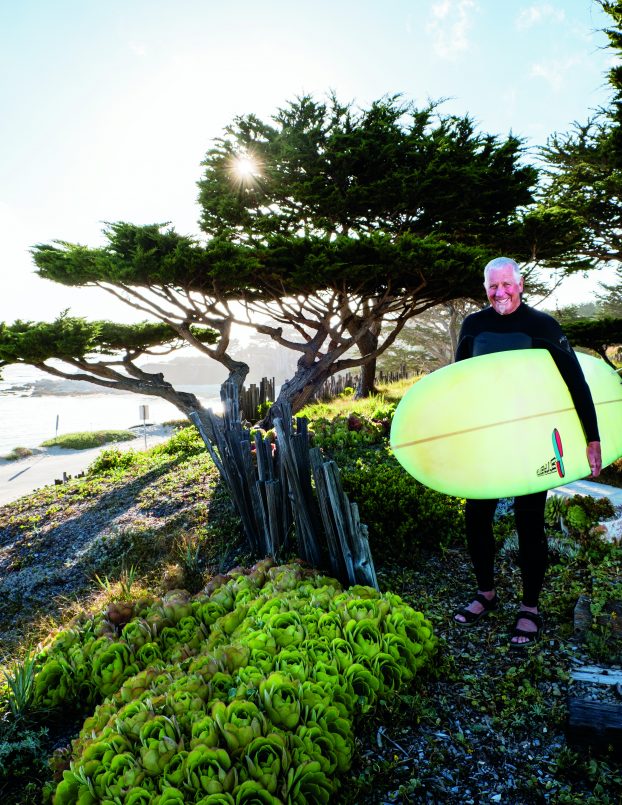
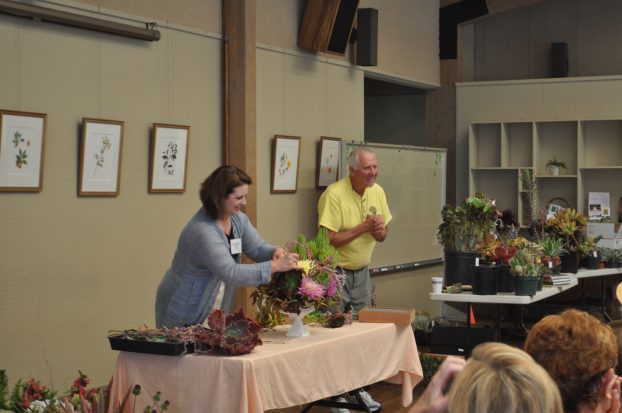
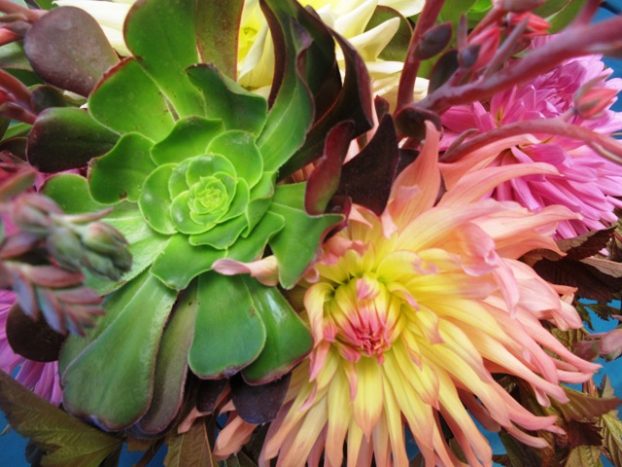
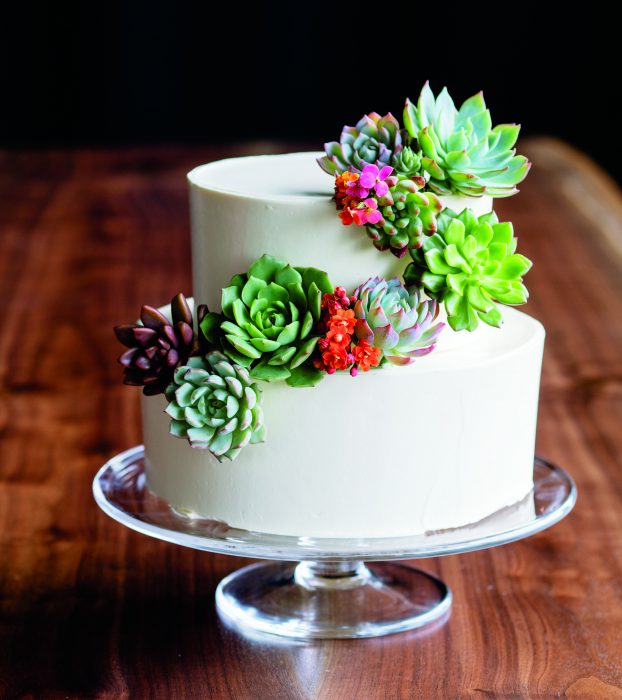
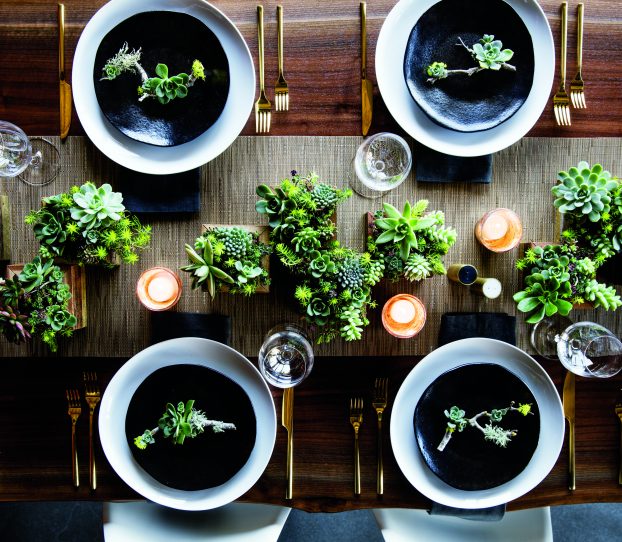
March 8th, 2017 at 6:01 pm
Debra! THANK YOU for printing out the entire script here — being able to read it in entirity just moved me to tears. Thank you again,
Robin
March 29th, 2017 at 8:33 am
[…] in Pound Ridge, NY, is the winner of our giveaway of Succulents, the gorgeous and informative book by recent podcast guest Robin Stockwell, aka @thesucculentguy. Congratulations, Xenia and thank you to Time Inc/Oxmoor House for the […]
April 10th, 2017 at 3:22 am
The globe made for the SF flower and garden show is such an awesome figure, would have loved to see it. The hanging cone is beautiful too.
This is about my second visit to your site and it has been helpful on both occasions.
June 28th, 2017 at 6:28 am
[…] If you recall my podcast episode with Robin Stockwell, author of the new book SUCCULENTS, he mentioned commissioning Marialuisa to design the succulent floral arrangements that appear in his book. You can listen to that episode and see images of her designs in the show notes here. […]
July 11th, 2018 at 9:47 am
[…] met Scott through succulent expert Robin Stockwell, who was a 2017 guest of this podcast when his book “Succulents” was published. As owners of independent nurseries, Robin and Scott move in the same circles. And recently, when […]